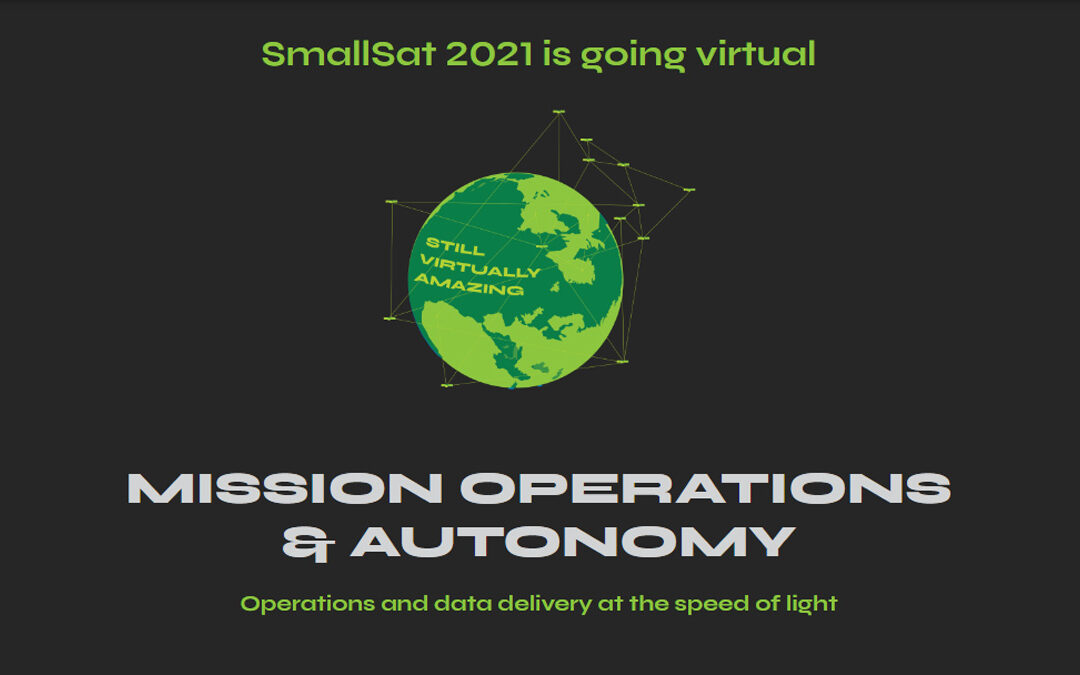Advanced Space: Thomas Gardner, Brad Cheetham, Alec Forsman, Cameron Meek, Ethan Kayser, Jeff Parker, Michael Thompson
Tyvak Nano-Satellite Systems: Tristan Latchu, Rebecca Rogers
Stellar Exploration: Brennan Bryant, Tomas Svitek
ABSTRACT
The cislunar environment is about to get much busier and with this increase in traffic comes an increase in the demand for limited resources such as Earth based tracking of and communications with assets operating in and around the Moon. With the number of NASA, commercial, and international missions to the Moon growing rapidly in the next few years, the need to make these future endeavors as efficient as possible is a challenge that is being solved now. Advanced Space is aiming to mitigate these resource limitations by enabling the numerous spacecraft in the cislunar environment to navigate autonomously and reduce the need for oversubscribed ground assets for navigation and maneuver planning. Scheduled to launch on a Rocket Lab Electron in October 2021, the Cislunar Autonomous Positioning System Technology Operations and Navigation Experiment (CAPSTONE) mission will leverage a 12U CubeSat to demonstrate both the core software for the Cislunar Autonomous Positioning System (CAPS) as well as a validation of the mission design and operations of the Near Rectilinear Halo Orbit (NRHO) that NASA has baselined for the Artemis Lunar Gateway architecture. Currently being developed in a Phase III of NASA’s SBIR program, our CAPS software will allow missions to manage themselves and enable more critical communications to be prioritized between Earth and future cislunar missions without putting these missions at increased risk.
CAPSTONE is the pathfinder mission for NASA’s Artemis program. The overall mission will include collaboration with the Lunar Reconnaissance Orbiter (LRO) operations team at NASA Goddard Space Flight Center to demonstrate inter-spacecraft ranging between the CAPSTONE spacecraft and LRO and with the NASA Gateway Operations team at NASA Johnson Space Center to inform the requirements and autonomous mission operations approach for the eventual Gateway systems. Critical success criteria for CAPSTONE in this demonstration are a transfer to and arrival into an NRHO, semi-autonomous operations and orbital maintenance of a spacecraft in an NRHO, collection of interspacecraft ranging data, and execution of the CAPS navigation software system on-board the CAPSTONE spacecraft.
Advanced Space along with our partners at NASA’s Space Technology Mission Directorate, Advanced Exploration Systems, Launch Services Program, NASA Ames Small Spacecraft Office, Tyvak Nano-Satellite Systems and Rocket Lab, envision the CAPSTONE mission as a key enabler of both NASA’s Gateway operations involving multiple spacecraft and eventually the ever-expanding commercial cislunar economy. This low cost, high value mission will demonstrate an efficient low energy orbital transfer to the lunar vicinity and an insertion and operations approach to the NRHO that ultimately will demonstrate a risk reducing validation of key exploration operations and technologies required for the ultimate success of NASA’s lunar exploration plans, including the planned human return to the lunar surface. This presentation will include the current mission status (which would include the launch and early mission operations), the operations plan for the NRHO, and lessons learned to date in order to inform future CubeSat pathfinders in support of national exploration and scientific objectives.
